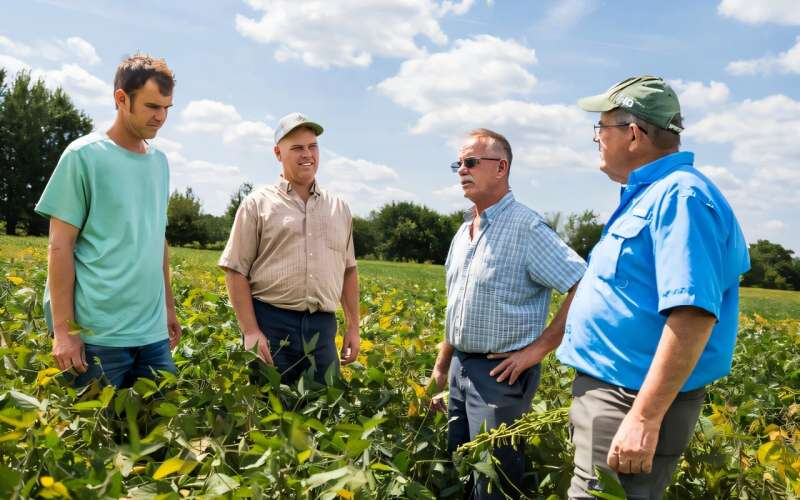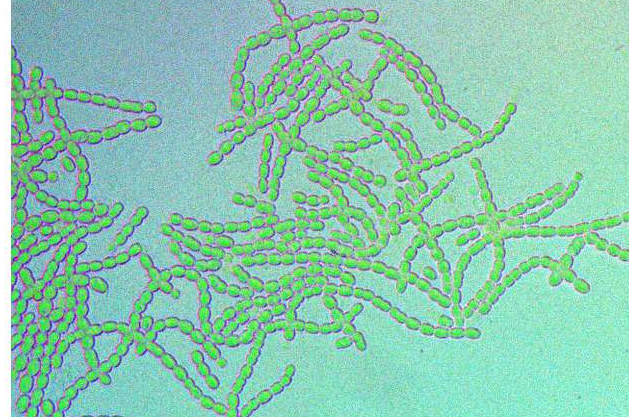A Breakthrough in Michigan: How High-Oleic Soybeans Are Changing the Dairy Industry

A remarkable discovery at Michigan State University (MSU) is creating ripples across the dairy sector, starting from a family-run farm in southern Michigan. This isn’t about fancy tech or futuristic machinery—it’s about soybeans. But not the kind you’d find in a typical field. These are high-oleic soybeans, a variety bred to contain more oleic acid, a heart-healthy monounsaturated fat. And the impact of this simple change in plant chemistry has been nothing short of transformative for Michigan’s dairy farmers.
The Preston Family and Their Bold Experiment
The story begins at Preston Farms, a fourth-generation dairy farm managed by Brian Preston. Located on about 1,500 acres, the farm is home to nearly 1,000 dairy cows. In the spring of 2024, the family made an unusual choice—they dedicated roughly 400 acres (about one-third of their total farmland) to planting high-oleic soybeans developed through research at MSU’s College of Agriculture and Natural Resources.
It was a gamble. Those 400 acres could have been used for the farm’s usual crops—corn and grain. But the Prestons had been following the MSU research led by Professor Adam Lock, who heads the Department of Animal Science and also serves as interim chair of Large Animal Clinical Sciences. His team had been studying dietary fats in dairy cows for over a decade, focusing on how different types of fats influence milk yield, composition, and cow health.
By autumn, the soybeans were ready for harvest. The Prestons then roasted the beans—a step the MSU team had found to be beneficial—and introduced them into the cows’ diet. The results appeared within three days. There was a measurable rise in milk fat and protein levels, two key components that determine the value and quality of milk.
Tangible Results: Feed Costs Down, Milk Quality Up
The immediate economic benefit was striking. Within weeks, the farm noticed that their purchased feed costs dropped by about 20% per month. For a farm of that size, that translates into thousands of dollars in monthly savings. This change came from replacing expensive fat and amino acid supplements—typically bought from feed suppliers—with the farm’s own roasted high-oleic soybeans.
The milk composition improved too. Fat percentages reportedly increased from around 4.4% to 4.8%, and protein levels rose as well. These changes mean that every gallon of milk produced was now worth more. It also made the overall dairy operation more efficient and profitable.
According to data shared by MSU’s AgBioResearch, the income-over-feed cost—a measure of how much a cow earns above what it eats—rose by more than one dollar per cow per day. That kind of margin can completely reshape a farm’s financial outlook.
What Makes High-Oleic Soybeans Special?
So what’s behind the magic of these soybeans? It comes down to oleic acid, a monounsaturated fatty acid also found in olive oil and avocados. Standard soybeans contain a mix of fats, including polyunsaturated ones that can oxidize easily during storage or digestion. High-oleic soybeans, however, have been genetically selected or bred to contain a higher concentration of oleic acid—often over 75% of their total fat content.
This not only makes the beans more stable and nutrient-dense, but also more compatible with ruminant digestion. When cows consume these fats, they tend to produce milk with a better balance of fat globules, leading to improved texture and yield during processing.
The MSU research team has spent years refining how these soybeans can be best used in dairy diets. They found that roasting the beans before feeding improves digestibility and ensures more of the beneficial fats reach the cow’s bloodstream instead of being lost in fermentation within the rumen.
Scaling Up: From a Single Farm to a Statewide Shift
Preston Farms may have been among the first to adopt this feeding approach, but they certainly won’t be the last. Demand for high-oleic soybean seed in Michigan has skyrocketed, and some seed suppliers ran out last year due to growing interest from other dairy operations.
The economic logic is clear: if a farm can grow its own high-value feed that improves milk quality and lowers supplement costs, it gains a significant competitive edge. MSU’s public-private partnerships, especially through the Michigan Alliance for Animal Agriculture (M-AAA), have been crucial in accelerating this kind of applied research.
This collaboration ensures that discoveries don’t just stay within academic journals—they end up in real barns, feed troughs, and milk tanks. That bridge between science and practice is what makes Michigan’s agricultural ecosystem so unique.
Broader Implications for Dairy Farmers
For Michigan—a state with more than 850 dairy farms and roughly 436,000 dairy cows—these findings could mean a major economic shift. The dairy industry contributes around $15.7 billion to the state’s economy each year, and small improvements in feed efficiency or milk composition can have a ripple effect across the entire supply chain.
High-oleic soybeans could reduce reliance on imported feed supplements, making operations more sustainable and locally integrated. For farmers, this not only translates into financial savings but also greater control over their own feed supply.
From an environmental perspective, the approach may also reduce the carbon footprint of dairy production. If farms grow their own soybean feed and eliminate the need for long-distance transport of supplements, overall emissions decline. The use of high-oleic oils in agriculture is already being explored for its oxidative stability, which can extend feed shelf life and reduce waste.
The Science Behind It: Why Oleic Acid Matters
Oleic acid (C18:1) is one of the most studied fatty acids in both human and animal nutrition. In cows, dietary oleic acid is known to increase milk fat synthesis and enhance energy efficiency. It also helps maintain better rumen function, allowing cows to extract more usable energy from their feed.
The MSU team’s long-term research has focused on the interaction between dietary fats and milk production. Their earlier studies explored how different oils—like palm oil, canola oil, and linseed oil—affect milk yield and composition. High-oleic soybeans emerged as the most promising because they combine high energy density with local availability and low processing cost.
When incorporated correctly, the beans can replace up to 80–90% of purchased fat and amino acid supplements, which are typically among the most expensive components of a dairy ration.
A Model for Sustainable Farming
This innovation aligns perfectly with the push toward sustainable agriculture. Instead of relying on synthetic additives, farmers are returning to natural, crop-based solutions. The high-oleic soybean approach represents a closed-loop system: grow the crop locally, feed it to the herd, and benefit from both the harvest and the milk output.
The Michigan State University Extension has played a key role in training farmers to adopt these methods safely—covering everything from roasting techniques to feed formulation and quality monitoring. The new Dairy Cattle Teaching and Research Center at MSU will continue to expand such research, ensuring that data keeps flowing from lab to pasture.
The Preston family’s partnership with MSU isn’t new; it stretches back more than three decades, and their connection to the university dates all the way to the 1940s, when Brian Preston’s grandfather attended an agricultural short course at MSU. The collaboration has evolved over generations, but this soybean project might be its most impactful chapter yet.
Looking Ahead
If current trends continue, Michigan could become a leader in soybean-based dairy nutrition, with other states following suit. Farmers in neighboring regions are already exploring contracts to grow high-oleic soybeans for feed use. The approach isn’t a silver bullet—it requires good management, roasting facilities, and careful ration balancing—but the data so far suggests a win-win for both economics and sustainability.
High-oleic soybeans are proving that innovation in agriculture doesn’t always come from new gadgets or software. Sometimes, it’s about rethinking the plants and animals we already depend on—and connecting them through smarter science.
Research Reference:
Michigan State University College of Agriculture and Natural Resources – M-AAA backs MSU research on high-oleic soybeans driving once-in-a-generation gains for Michigan dairy farmers.
https://www.canr.msu.edu/news/m-aaa-backs-msu-research-on-high-oleic-soybeans-driving-once-in-a-generation-gains-for-michigan-dairy-farmers





